Papers
December 14th, 2020 | by
admin | published in
Featured, Highlights, Papers, Quantum Computing, Research
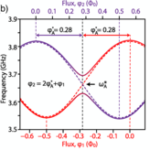
Universal Nonadiabatic Control of Small-Gap Superconducting Qubits Daniel L. Campbell, Yun-Pil Shim, Bharath Kannan, Roni Winik, David K. Kim, Alexander Melville, Bethany M. Niedzielski, Jonilyn L. Yoder, Charles Tahan, Simon Gustavsson, and William D. Oliver Phys. Rev. X 10, 041051 – Published 14 December 2020 ABSTRACT Resonant transverse driving of a two-level system as viewed in […]
July 21st, 2019 | by
admin | published in
Featured, Highlights, Papers, Quantum Computing, Research
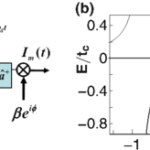
We revisit quantum capacitance from first principles to understand its potential for quantum-limited readout. We show that the readout speed can be unexpectedly fast with high kinetic inductance cavities while the qubit remains in a particularly immune state to noise.
April 14th, 2019 | by
admin | published in
News, Papers, Quantum Computing, Research
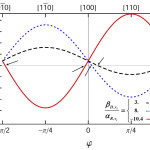
We explain an unexpected anomoly of the g-factor (how the electron spin qubit energy changes as a function of magnetic field) in silicon quantum dots. This new mechanism creates a new channel for decoherence (via electrical noise and spin-orbit coupling), which – we predict can be negated by changing the direction of the magnetic field. This […]
March 16th, 2016 | by
admin | published in
Highlights, News, Papers, Quantum Computing
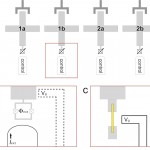
Superconducting circuits offer tremendous design flexibility in the quantum regime culminating most recently in the demonstration of few qubit systems supposedly approaching the threshold for fault-tolerant quantum information processing. Competition in the solid-state comes from semiconductor qubits, where nature has bestowed some very useful properties which can be utilized for spin qubit-based quantum computing. Here […]
November 5th, 2015 | by
admin | published in
News, Papers, Quantum Computing
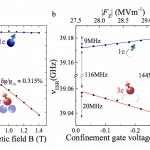
Spin qubits composed of either one or three electrons are realized in a quantum dot formed at a Si/SiO_2-interface in isotopically enriched silicon. Using pulsed electron spin resonance, we perform coherent control of both types of qubits, addressing them via an electric field dependent g-factor. We perform randomized benchmarking and find that both qubits can […]
July 2nd, 2014 | by
admin | published in
News, Papers
Superconducting circuits are exceptionally flexible, enabling many different devices from sensors to quantum computers. Separately, epitaxial semiconductor devices such as spin qubits in silicon offer more limited device variation but extraordinary quantum properties for a solid-state system. It might be possible to merge the two approaches, making single-crystal superconducting devices out of a semiconductor by […]
August 30th, 2013 | by
admin | published in
All, Nanotechnology, News, Papers, Phonitons, Quantum Computing

We describe a chip-based, solid-state analog of cavity-QED utilizing acoustic phonons instead of photons. We show how long-lived and tunable acceptor impurity states in silicon nanomechanical cavities can play the role of a matter nonlinearity for coherent phonons just as, e.g., the Josephson qubit plays in circuit QED. Both strong coupling (number of Rabi oscillations ≲100) and strong dispersive coupling (0.1–2 MHz) regimes can be reached in cavities in the 1–20-GHz range, enabling the control of single phonons, phonon-phonon interactions, dispersive phonon readout of the acceptor qubit, and compatibility with other optomechanical components such as phonon-photon translators. We predict explicit experimental signatures of the acceptor-cavity system.
June 27th, 2013 | by
admin | published in
All, News, Papers

New theory for spin-valley anticrossing and spin-relaxation in realistic silicon quantum dots.
Silicon quantum dots are promising for quantum computing as they offer low memory errors, fast operation, and a hoped-for compatibility with standard semiconductor processes.
November 28th, 2011 | by
admin | published in
All, Blog, Featured, Highlights, Nanotechnology, Papers, Phonitons, Research
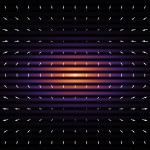
This work explores the possibility of a new, man-made quantum object: a hybridization of a localized, long-lived phonon (a quantum of sound) and a matter excitation. That this is possible is not obvious.
May 22nd, 2008 | by
admin | published in
All, Papers, Research, Solid Light
Phys. Rev. A, 77, 5, 053819 (2008)
Systems of coupled photonic cavities have been predicted to exhibit quantum phase transitions by analogy with the Hubbard model. To this end, we have studied topologies of few (up to six) photonic cavities each containing a single two-level system. Quantum phase space diagrams are produced for these systems, and compared to mean-field results. We also consider finite effective temperature, and compare this to the notion of disorder. We find the extent of the Mott lobes shrink analogously to the conventional Bose-Hubbard model.







